Flat Iron, Leeds: We meet the people behind the Flat Iron steak restaurant in Leeds and its unique Yorkshire herd of cows
In a field in North Yorkshire, a very special herd of cows is grazing. Under the supervision of third-generation farmer Charles Ashbridge, the 40 or so beasts are bred to supply meat to Flat Iron – a small chain of restaurants which has just opened its first branch in the North, in Leeds, dedicated to the cut of steak that gave it its name.
The restaurants – and the herd – are the brainchild of Charlie Carroll who 11 years ago decided he wanted to make eating steak a more accessible and affordable option.
Advertisement
Hide AdAdvertisement
Hide Ad“Traditionally, eating steak at a restaurant was always for exclusive, special occasions and was often hit and miss. Charlie’s mission was to make remarkable steak available to everyone,” says Carroll’s head of beef, Fred Smith, at the opening of Flat Iron’s 14th restaurant.
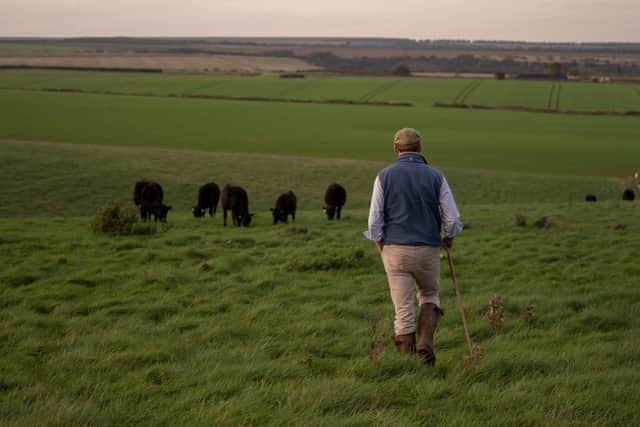

During his nine months of beef research, he taught himself how to butcher and discovered that little-known secondary cuts from the very best beef could be exceptionally tasty but reasonably affordable – he refers to it as “the democratisation of great steak”.
It wasn’t just the cut of beef that Carroll was passionate about – it was the provenance of the beef and the rearing of the cows themselves.
“We spent a lot of time asking around other top steak restaurants to find out where they bought their beef. We contacted all of them, including Charles Ashbridge, who ran Taste Tradition in Yorkshire,” says Smith.
Advertisement
Hide AdAdvertisement
Hide Ad“We have always been passionate not just about serving great beef but also about learning how to breed and raise the best possible cattle. In the same year Flat Iron was set up we travelled to Thirsk, to talk to Charles.”
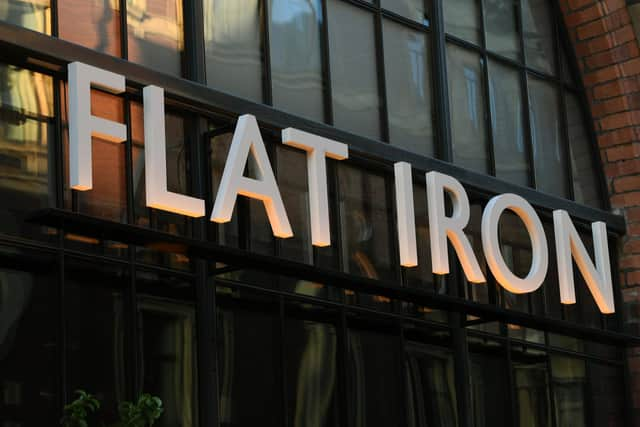

“Charlie said he wanted to make steak affordable but he wanted it to be the best. I was intrigued. Flat iron isn’t seen as a premium cut like fillet and I was concerned about its consistency,” says Ashbridge, whose family has farmed at Cold Kirby, in the North Yorkshire Moors National Park, for three generations.
“But the way Charlie and his team handle and cook the flat iron is incredible. At first we supplied Charlie with beef from different breeds but after about three years he said he wanted his own herd and he wanted Wagyu. I have never known a restaurant that was committed to having its own herd but he wanted the best.”
Smith adds: “Talking about what breed, feed and husbandry could make the best beef anyone had ever tried sparked the thought that if we had our own herd of cattle, together with Charles’ experience, we could experiment and learn everything about how to breed and raise the best cattle. There wasn’t anything he didn’t know and then we realised that the best thing was to have our own herd of cattle, looked after by Charles in Yorkshire. Working with Charles has been a learning experience which still continues today.
Advertisement
Hide AdAdvertisement
Hide Ad“Using rare and traditional breeds leading a longer stress-free life, we strive to produce the best beef we possibly can. Over the past couple of years, we have focused on rearing Wagyu, one of our favourite breeds, and are proud to be able to now share with our guests beef from our suckler herd.
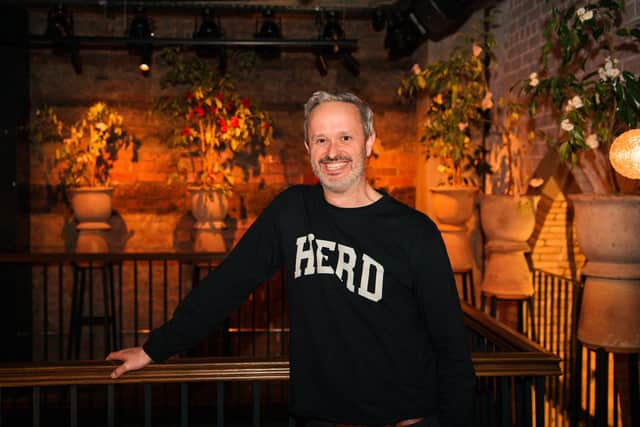

“We believe Flat Iron can be a force for good and have a positive impact – on our guests, our teams and the planet. The challenges facing the world today can seem vast and worrying; we’re not claiming to have all the answers, but we do have a responsibility to make progress day by day, month by month, and year by year. Through continuous learning, we are committed to identifying new opportunities which can make a difference.
“As a beef business, we are conscious of the impact we make and the need to tread lightly wherever possible. We are committed to improving our knowledge of our existing suppliers and to influence the decisions made at farm level.
“We are proud to own our own herd in Yorkshire. Together with Charles, we are currently undertaking a life-cycle assessment to understand the carbon footprint of the herd and identify ways to reduce on-farm emissions.
Advertisement
Hide AdAdvertisement
Hide Ad“Once complete, we will share our learnings and make recommendations to other farms and suppliers so we can encourage the wider industry to bring about positive change.”
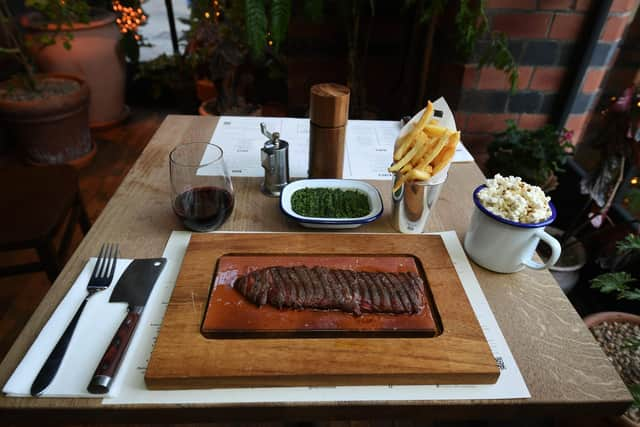

Ashbridge says the life-cycle assessment has been completed and they are hoping for the results early in the New Year.
“We all want to think we are doing our best to be as sustainable as possible but it will be nice to actually know and so we are excited about the results of the assessment.”
Flat iron steak – also known as a top blade steak, top blade fillet, and shoulder top blade steak – is cut from the shoulder of the cow (called the chuck) and is marbled, giving it a lot of flavour if cooked properly.
Advertisement
Hide AdAdvertisement
Hide AdThe origin of flat iron steak began in America with a National Cattlemen’s Beef Association (NCBA) programme in 1998, as an effort to reduce waste and promote beef. Dwain Johnson, of the University of Florida's Institute of Food and Agricultural Sciences, and Chris Calkins, of the University of Nebraska-Lincoln, were given grants to help mitigate these issues. Calkins and Johnson focused on the cheaper parts of beef, the chuck and the round, to see if a desirable steak could be produced from either.
The research teams at both schools found that the top blade of the chuck, specifically the infraspinatus muscle, contained tender meat, but there was a large seam of tough connective tissue down the middle that had to be removed.
Removing this tissue was seen to be too much effort for meat processors to bother with, as it wasn’t thought that enough meat would be recovered to make it worth the while. However, Calkins and Johnson found that, while cutting out the tissue did result in a thin cut of beef, it plumped up well when cooked. The NCBA started promoting flat iron steak in 2001.
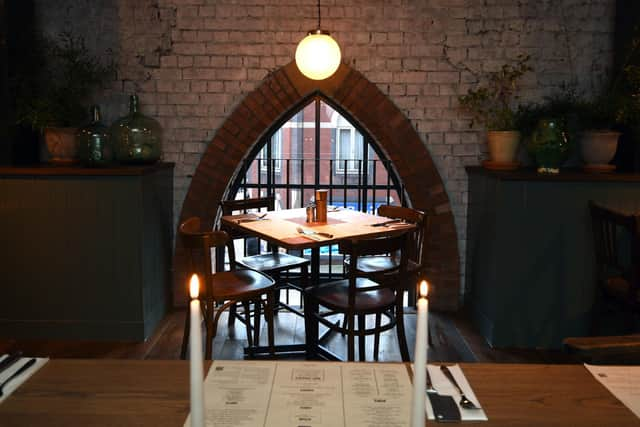

“Originally part of the top blade roast, the flat iron was born as a result of the tough connective tissue that ran through the middle of the cut of meat. Once this is removed, the two pieces are treated separately, one becoming the flat iron steak, the other called the top blade steak,” adds Smith.
Advertisement
Hide AdAdvertisement
Hide AdMost of the Flat Iron restaurants are in London and South but Carroll had always wanted to expand to the North, especially Leeds. The company’s latest branch opened last month on the corner of Albion Place and Lands Lane, in the former Church Institute. A Manchester Flat Iron is due to open next year.
The menu features the flat iron steak –aged for at least 21 days – alongside popular side dishes, including homemade beef dripping chips, crispy bone marrow garlic mash, truffled macaroni cheese and creamed spinach.
A rotating black board of beef specials is also available, including a Wagyu cut of the day, Scottish bavette and Bearnaise Cheeseburger. Everyone is given some popcorn cooked in beef dripping when they arrive and leaves with an ice cream.
But at a time when we are all being told to eat less red meat, does Smith think Flat Iron will continue to be the success it is today?
Advertisement
Hide AdAdvertisement
Hide Ad“We aren’t suggesting you eat at flat iron every day,” he says. “And we do understand that a lot of people are looking to reduce red meat in their diet, but we do believe that when people eat steak they want to know it is the best quality it can be.
“It is a complicated world and we are trying to do the best we possibly can to reduce the impact on the planet and we are working with Charles to look at the future and ways of reducing our carbon footprint and effect on the land.”
And if the opening night was anything to go by, it seems to people of Leeds have embraced Flat Iron.
Comment Guidelines
National World encourages reader discussion on our stories. User feedback, insights and back-and-forth exchanges add a rich layer of context to reporting. Please review our Community Guidelines before commenting.